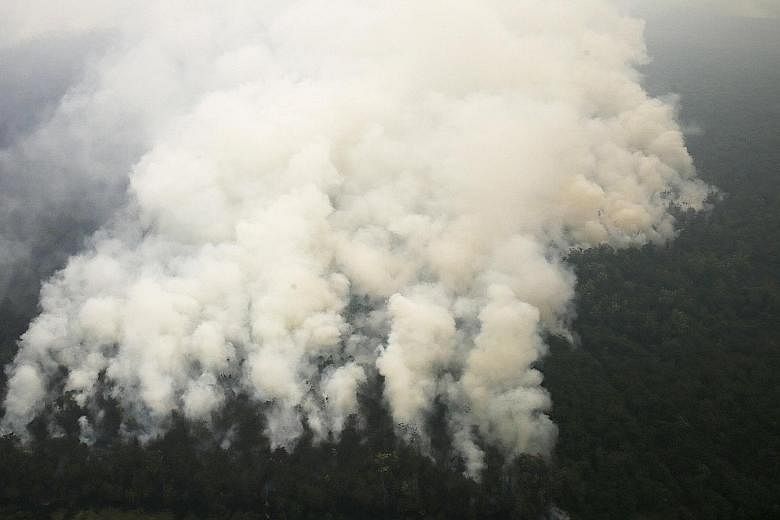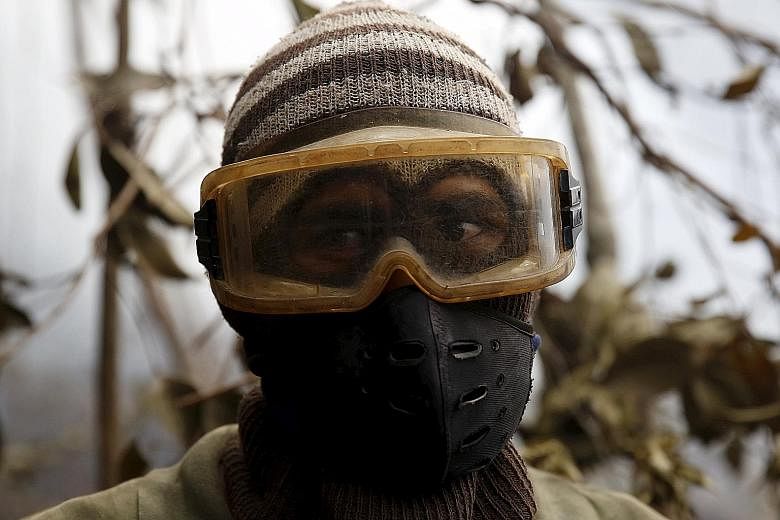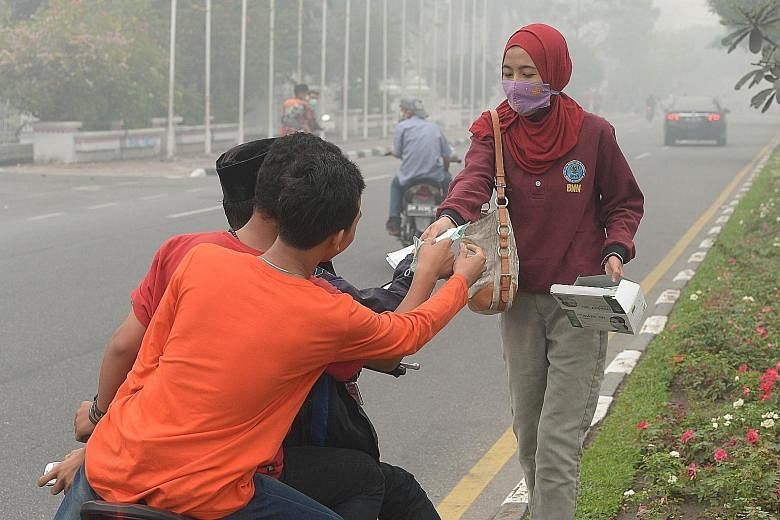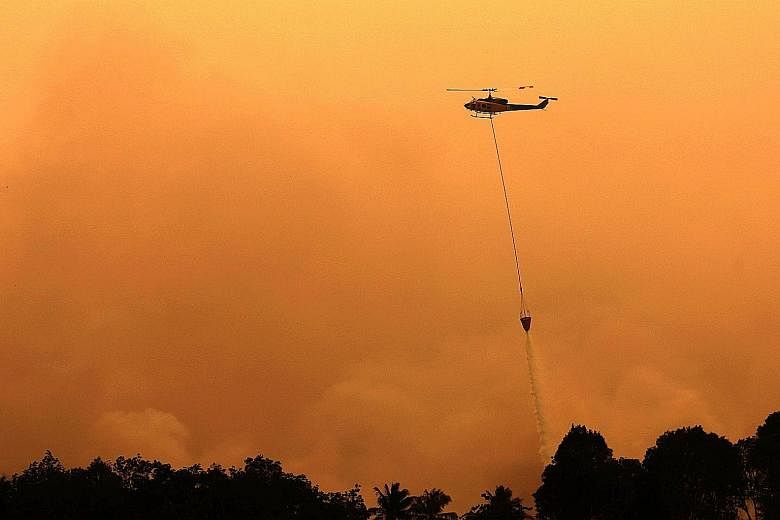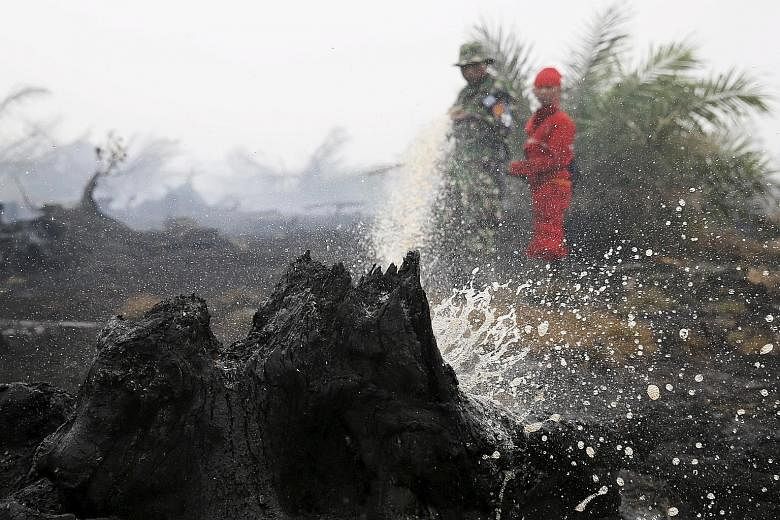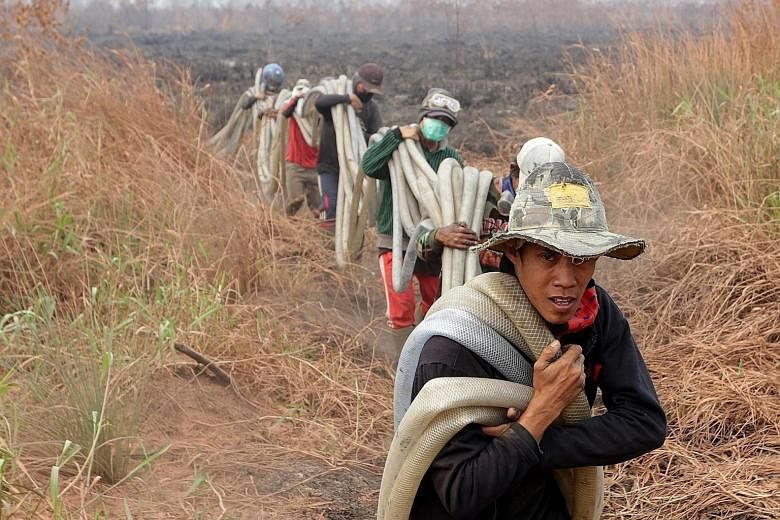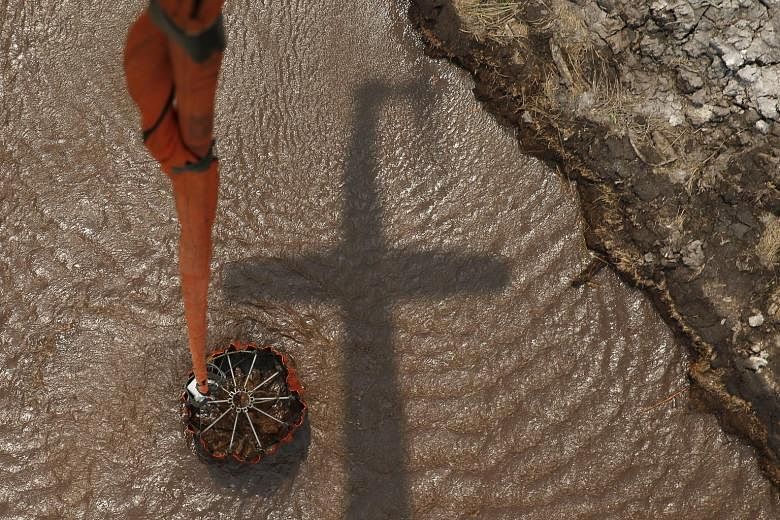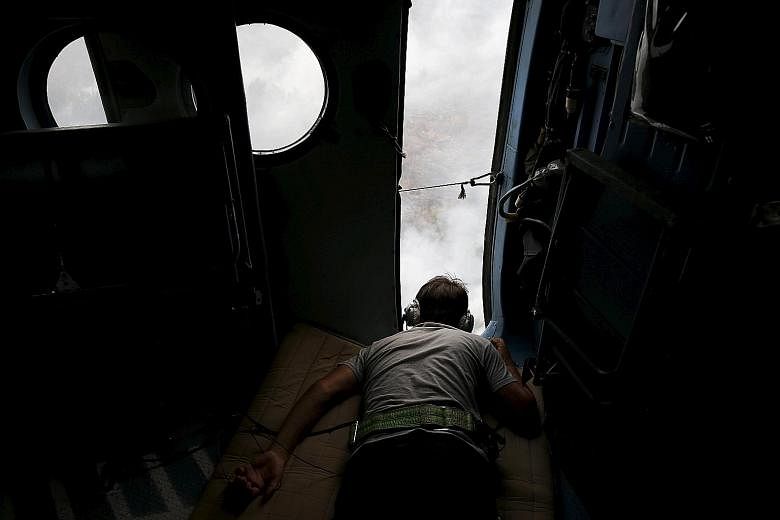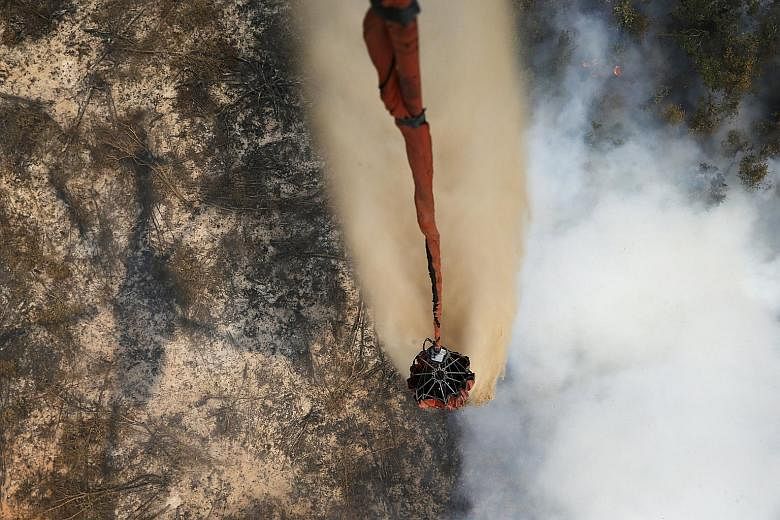In a matter of weeks, Indonesia's haze crisis has exploded despite pledges by President Joko Widodo and some provincial governments to maximise efforts to prevent fires from engulfing large parts of Sumatra and Kalimantan.
But accurately identifying those behind many of the fires is far from simple. It is easy to blame big plantation companies because of the large areas they control and, at times, because of the large numbers of hot spots recorded on their lands.
But the situation is far more complex. For big plantation firms, fires are their top concern because the blazes destroy crops.
Non-governmental organisations (NGOs) and environment experts say there are many actors involved but also point to investigations being hampered by poor law enforcement, corruption and unclear rules on land use.
"Studies of fire and haze in Kalimantan and Sumatra firmly point towards small-scale farmers and other under-the-radar, mid-scale landowners rather than large companies as the main cause of fires and haze," wrote Dr Erik Meijaard, a conservation scientist of the Borneo Futures initiative, in a recent commentary in the Jakarta Globe.
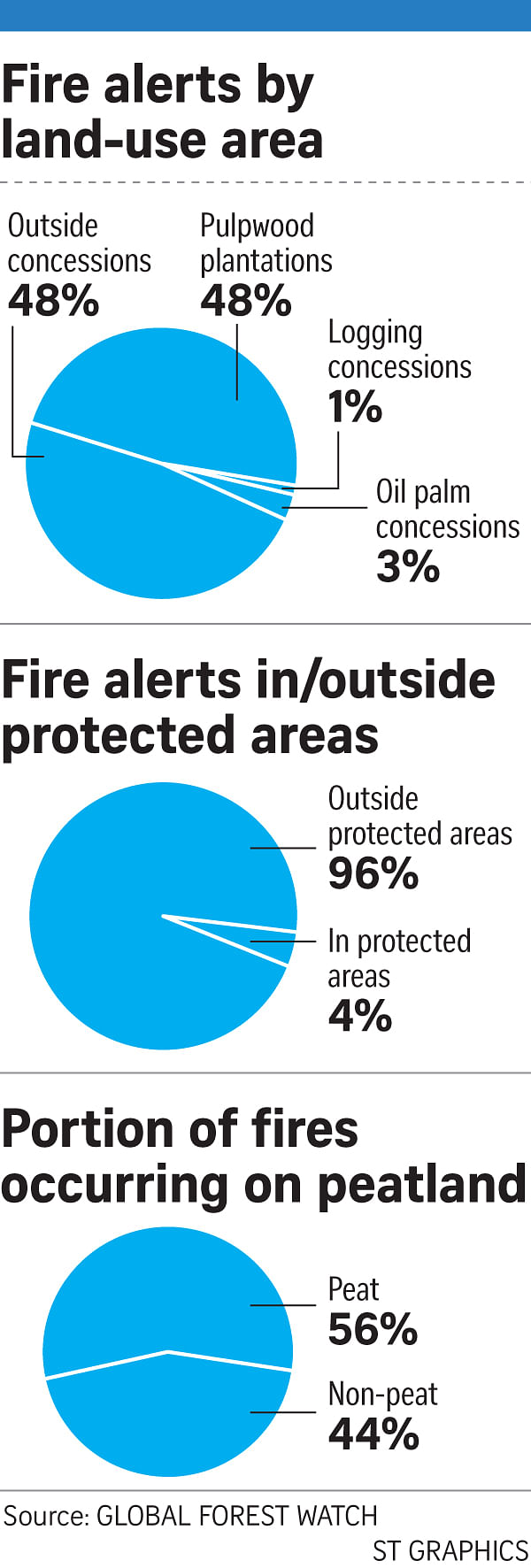
During a visit to Palembang, the capital of South Sumatra province, The Straits Times saw many small grass fires on a trip outside the city.
The fires could have been started by local farmers, fishermen wanting to clear access to streams and illegal loggers.
Evidence shows that the majority of fires usually occur outside timber, logging and oil palm concessions and that farmers are partly to blame. Complicating the picture further is that many pulpwood concessions have communities living inside them. In some cases, transmigrants illegally claim a piece of land by clearing it using fire and then planting crops - particularly in protected forest areas.
Indonesian law allows farmers to clear forested land using fire, provided the area cleared does not exceed 2ha.
"We have seen largely two types of actors involved in fires in Sumatra," Mr Aditya Bayunanda, WWF Indonesia's Forest Commodity Market Transformation Leader, told The Straits Times yesterday.
"First of all, people are actively setting fires to clear lands, often as part of grabbing new lands. Land-grabbing has recently been increasing inside protected areas as much of Sumatra's lands had been leased to companies. Such illegal encroachments are often sponsored by companies, financiers or even government officials," said Mr Aditya, who is also a member of Eyes on the Forest, a coalition of local NGOs.
Second, he said, oil palm and pulp plantations prime the landscape for fire by opening up lands, particularly flammable peat lands.
"Such fires can occur through various causes, for example, (being) set deliberately by people who have conflicts with the companies," he said.
Mr Achmad Santosa, who was in charge of monitoring law enforcement under former president Susilo Bambang Yudhoyono, told The Straits Times yesterday: "The environment law says companies must douse a fire within their concessions, regardless of where the fire started.
"There are companies that do not meet the requirements to have adequate fire-fighting systems. This must be regularly audited and followed up," he said .
Government officials privately say companies pay off prosecutors and the police. Officials and NGOs also say some companies pay third parties to start fires to avoid being directly linked. Local communities are then blamed.
Some companies also take advantage of Indonesia's lack of a unified land-use map, meaning there is often confusion and conflict over how land can and should be used. This makes it easier to illegally clear land and avoid prosecution.
The Global Forest Watch (GFW) programme, run by Washington-based World Resources Institute, produces daily analyses on the fires in Indonesia. Between Sept 7 and yesterday, GFW's analysis of accumulated hot spots for that week showed 48 per cent of fires were outside pulpwood, logging and palm oil concessions. Of the remainder, 48 per cent were on pulpwood concessions and 3 per cent on oil palm concessions. This, though, does not mean the companies started the majority of the fires.
Researchers at the Centre for International Forestry Research in Bogor, near Jakarta, say it is essential that the government understands the political economy around land use and the risk of formulating policies based on incomplete, erroneous or misinterpreted fire data.
